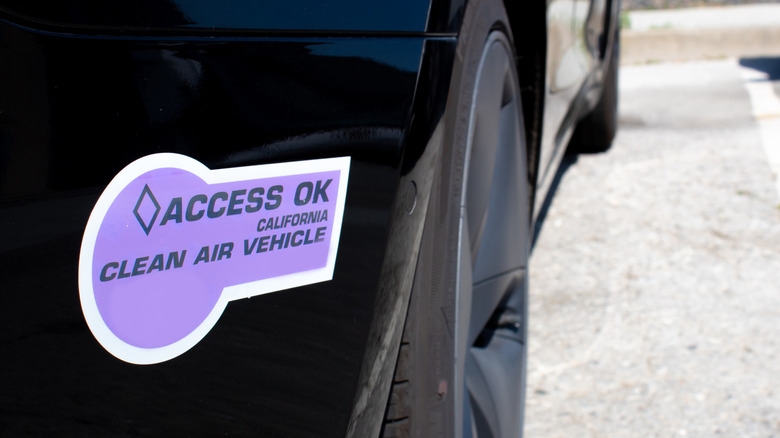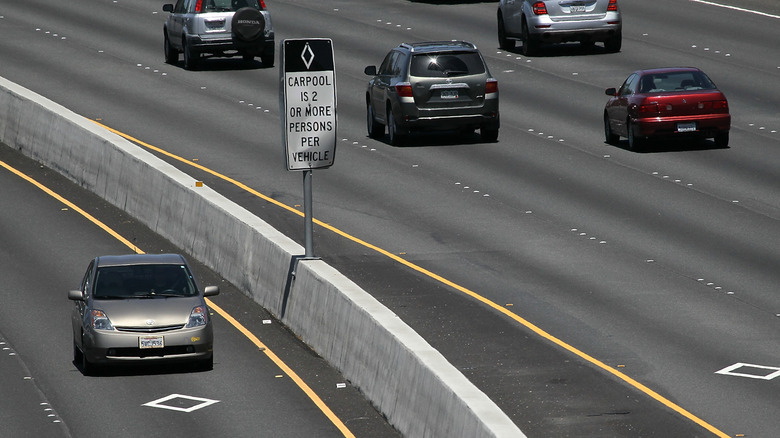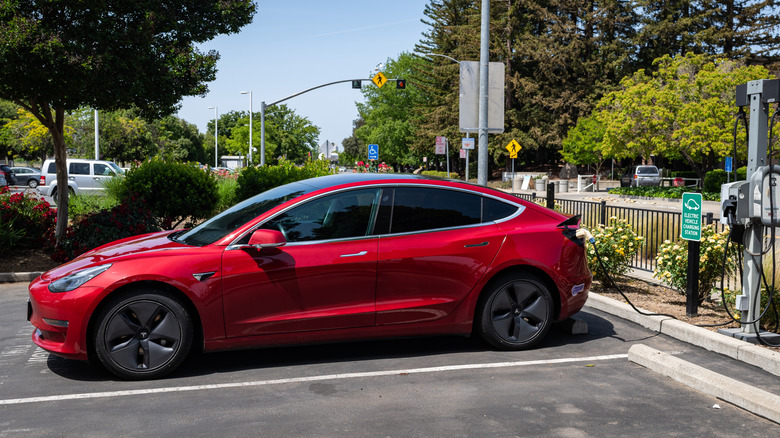Sorry Solo EV Drivers, You're Getting Kicked Out Of The Carpool Lane
Over the last 25 years, if you've ever been driving on a busy freeway in California or in other parts of the US, like New York, you may have seen a vehicle with a distinct sticker on the rear bumper zip past you in the HOV or carpool lane, usually with just a single occupant in the car. Though these lanes were designed for, and are officially designated to be used by vehicles with at least two occupants, qualifying low-emission vehicles could use the lanes with solo drivers if they had valid clean air vehicle access stickers.
For many years, this was a huge perk that helped incentivize clean-air vehicle purchases, especially for people who had long commutes on California's notoriously gridlocked freeways. The perk was also a way for early adopters of electric vehicles to help offset some of the other costs associated with owning an EV.
But now, the era of those distinct stickers allowing EV and plug-in-hybrid owners to ride solo in the carpool lane has come to an end. The US Congress did not reauthorize the program that allows low-emission vehicles to use HOV lanes, and effective October 1, 2025, the once common stickers will no longer grant access to the lanes.
The stickers predate the EV era
HOV lanes have been around in some form since the late 1960s, and are especially prominent in California's large metropolitan areas. Their purpose was to both reduce pollution and reduce traffic congestion by allowing a designated lane (or lanes) of a freeway to be used only by vehicles with more than one person inside. Though some riders aren't aware, motorcycles are usually allowed to use HOV lanes as well.
The program to allow low-emission vehicles with single drivers in the carpool lane was first authorized in 1999, and in California, over a million HOV stickers have been issued since then. From 2004 to 2011, eligibility was expanded to include gasoline-electric hybrid vehicles, and during the late 2000s, the HOV-sticker-wearing Toyota Prius was a ubiquitous sight on the freeways of Southern California. In its later years, the California HOV sticker program was aimed at both full-electric and plug-in-hybrid vehicles, both of which are now common across the state.
EVs in California are here to stay
The end of solo-driver carpool lane access for EVs is just the latest in many steps that the federal government has taken to pivot away from electric vehicle mandates and incentives under the Trump administration. Other moves have included the elimination of the $7,500 EV tax credit and the U.S. Senate's blockage of a California EV mandate which intended to end the sale of internal combustion vehicles in the state by the year 2035.
While the end of the program may come as a blow to those wishing to stay aggressive on the transition away from internal combustion and into electric vehicles, many feel the change won't have a big impact on EV adoption rates in the Golden State. California already leads all other states in EV registration by a massive margin, and even strong EV admit that simply due to the massive number of EVs on California highways, the state's HOV sticker program was likely in its final years even without federal action.
During the past two and a half decades, electric vehicles have gone from becoming a nearly non-existent transportation choice to some of the most common vehicles on California highways. With that in mind, it's hard to deny that California's HOV sticker program has been a big success in helping get EVs and other low-emission vehicles out of the niche and into the mainstream.


